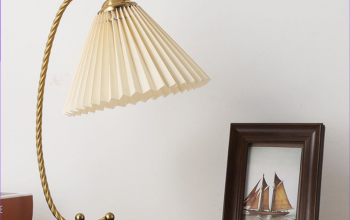When it comes to hosting a dinner party or even just enjoying a meal with your family, the table setting plays a crucial role in creating a beautiful and inviting atmosphere. Table supplies, such as tablecloths, napkins, dinnerware, cutlery, glassware, centerpieces, and decorations, are essential elements that can enhance the dining experience. They not only add aesthetic appeal but also contribute to the functionality of the table. In this article, we will explore the different aspects of table supplies and provide tips on how to choose the right ones for your table setting.
Tablecloth and Napkins: Choosing the Right Fabric and Color
The tablecloth and napkins are the foundation of any table setting. When selecting these items, there are several factors to consider. First and foremost, you need to choose the right fabric. Cotton and linen are popular choices for tablecloths as they are durable, easy to clean, and come in a variety of colors and patterns. Polyester is another option that is more resistant to stains and wrinkles. For napkins, consider using fabric that is soft and absorbent.
In terms of color and pattern, it is important to choose ones that complement the overall theme or style of your table setting. Neutral colors like white, cream, or gray are versatile options that can be paired with any color scheme. If you want to add a pop of color or pattern, consider using vibrant napkins or a patterned tablecloth. Just make sure that the colors and patterns do not clash with each other or overwhelm the rest of the table.
Dinnerware: Plates, Bowls, and Serving Dishes for Every Occasion
Dinnerware is an essential component of any table setting as it serves both functional and aesthetic purposes. There are various types of dinnerware available, including plates, bowls, and serving dishes. When choosing dinnerware, it is important to consider the size and shape of the plates and bowls. For formal occasions, larger plates and deeper bowls are typically used, while for casual dining, smaller plates and shallower bowls are more common.
In terms of material, porcelain and bone china are popular choices for formal dinnerware due to their elegance and durability. For everyday use, stoneware and earthenware are more practical options as they are less likely to chip or break. When it comes to serving dishes, consider the type of food you will be serving. Different dishes, such as platters, salad bowls, and gravy boats, are designed for specific purposes and can enhance the presentation of your food.
Cutlery: Essential Flatware for Formal and Casual Dining
Cutlery is another important aspect of table supplies that should not be overlooked. There are various types of cutlery available, including knives, forks, spoons, and serving utensils. When choosing cutlery, it is important to consider the material and style. Stainless steel is a popular choice for its durability and resistance to rust and corrosion. Silver-plated or gold-plated cutlery can add a touch of elegance to a formal table setting.
In terms of style, there are different designs available, ranging from classic to contemporary. Choose a style that complements the overall theme or style of your table setting. When it comes to placement, knives should be placed on the right side of the plate with the blade facing inward, while forks should be placed on the left side with the tines facing upward. Spoons can be placed on the right side next to the knives.
Glassware: Choosing the Right Glasses for Wine, Cocktails, and Water
Glassware is an essential component of any table setting, especially if you plan on serving wine or cocktails. There are different types of glasses available, each designed for a specific purpose. Wine glasses, for example, come in various shapes and sizes depending on the type of wine being served. Red wine glasses have a wider bowl to allow the wine to breathe, while white wine glasses have a narrower bowl to preserve the aromas.
When choosing glassware, it is important to consider the size and shape. The size of the glass should be appropriate for the amount of liquid being served. The shape of the glass can also affect the taste and aroma of the beverage. For example, champagne flutes are tall and narrow to preserve the bubbles, while cocktail glasses are wide and shallow to allow for garnishes and ice.
Centerpieces and Decorations: Adding a Touch of Elegance to Your Table

Centerpieces and decorations are an important aspect of table supplies as they can add a touch of elegance and create a focal point on the table. There are various ideas for centerpieces and decorations, depending on the occasion and personal preference. Fresh flowers are a classic choice that can add color and fragrance to the table. Candles are another popular option that can create a warm and inviting atmosphere.
When choosing centerpieces and decorations, it is important to consider the size and style. The size should be appropriate for the size of the table and should not obstruct the view or conversation between guests. The style should complement the overall theme or style of your table setting. For example, if you are hosting a formal dinner party, consider using crystal vases or silver candle holders.
Place Settings: Proper Arrangement and Etiquette for Formal and Casual Dining
Properly setting the table is not only aesthetically pleasing but also essential for proper etiquette during formal and casual dining. When setting a formal table, there are specific guidelines to follow. The plates should be placed in the center of each place setting with the napkin on top. The cutlery should be placed in the order it will be used, with the forks on the left, knives and spoons on the right, and dessert cutlery at the top.
For a casual table setting, the guidelines are more flexible. The plates can be placed slightly off-center with the napkin on the side. The cutlery can be placed in a more casual manner, with the forks and knives on one side and the spoons on the other. It is important to remember that the placement of table supplies should be practical and convenient for guests to use.
Serving Utensils: Essential Tools for Serving and Carving
Serving utensils are essential tools for serving and carving food at the table. There are various types of serving utensils available, each designed for a specific purpose. For example, a serving spoon is used for serving vegetables or rice, while a carving knife and fork are used for carving meat. When choosing serving utensils, it is important to consider the size and style.
The size of the serving utensils should be appropriate for the type of food being served. For example, a larger spoon may be needed for serving soup, while a smaller spoon may be needed for serving sauces or condiments. The style of the serving utensils should complement the overall theme or style of your table setting. For example, if you are hosting a formal dinner party, consider using silver-plated or gold-plated serving utensils.
Table Accessories: Salt and Pepper Shakers, Butter Dishes, and More
Table accessories are small but important elements that can enhance the functionality and aesthetics of your table setting. There are different types of table accessories available, including salt and pepper shakers, butter dishes, gravy boats, and bread baskets. When choosing table accessories, it is important to consider the style and size.
The style of the table accessories should complement the overall theme or style of your table setting. For example, if you are hosting a rustic-themed dinner party, consider using wooden salt and pepper shakers or a ceramic butter dish. The size of the table accessories should be appropriate for the amount of food being served and the size of the table.
Cleaning and Care: Tips for Maintaining Your Table Supplies for Longevity
Once you have set a beautiful table, it is important to take care of your table supplies to ensure their longevity. Cleaning and caring for table supplies is relatively simple but requires regular maintenance. When it comes to cleaning, follow the manufacturer’s instructions for each item. Most table supplies can be washed by hand or in the dishwasher, but some may require special care.
When storing table supplies, make sure they are clean and dry before storing them. Use protective covers or cases to prevent scratches or damage during storage. It is also important to store them in a cool and dry place to prevent moisture or humidity from causing damage. Regularly inspect your table supplies for any signs of wear or damage and replace them if necessary.
In conclusion, the importance of table supplies in creating a beautiful and functional table setting cannot be overstated. By carefully selecting tablecloths, napkins, dinnerware, cutlery, glassware, centerpieces, decorations, place settings, serving utensils, and table accessories, you can create a table setting that is both elegant and practical. Follow the tips and guidelines provided in this article to create a table setting that will impress your guests and enhance the dining experience.



